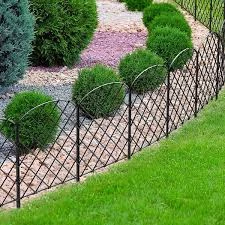Building Tomato Cages from Concrete Reinforcing Wire
When it comes to gardening, particularly when growing tomatoes, having sturdy supports is essential for healthy plants and bountiful harvests. Traditional tomato cages, often made from flimsy materials, can easily bend, rust, or break under the weight of heavy fruit. An innovative and durable solution is using concrete reinforcing wire to build robust and long-lasting tomato cages. This method not only supports your plants but also adds a touch of craftsmanship to your gardening efforts.
Why Use Concrete Reinforcing Wire?
Concrete reinforcing wire (also known as rebar wire) is designed to withstand significant weight and pressure, making it an ideal material for supporting tomato plants. This wire is typically galvanized, meaning it has been coated with zinc to prevent rust. Thus, it can endure various weather conditions without deteriorating over time. Additionally, the grid pattern of the wire allows for excellent air circulation around the plants and easy access for pruning and harvesting.
Materials Needed
Creating your own tomato cages from concrete reinforcing wire is relatively straightforward, requiring just a few tools and materials
1. Concrete Reinforcing Wire Purchase a roll from a hardware store or gardening center. The standard width is usually about 5 to 6 feet. 2. Wire Cutters You will need these to cut the wire to the desired lengths. 3. Gloves Protect your hands while working with the wire to avoid cuts. 4. Optional Materials If you want added stability, consider using rebar stakes to anchor the cages into the ground.
Step-by-Step Instructions
1. Determine the Size Decide how tall and wide you want your cages to be. A common height is around 5 feet, with a diameter of about 18 inches to accommodate healthy tomato growth.
2. Cut the Wire Using wire cutters, cut a length of concrete reinforcing wire that is about 5 feet long. For smaller cages, you can adjust the height accordingly.
tomato cages from concrete reinforcing wire

3. Form the Cage Bend the cut wire into a circular shape, overlapping the ends slightly. Secure the ends together by twisting them or using additional smaller pieces of wire to tie them together firmly.
4. Create Support Rings If you want extra support, you can create additional rings along the height of the cage at intervals of about 12 to 18 inches. This can be achieved by cutting additional lengths of wire and fixing them horizontally around the cage.
5. Install the Cage Place the cage in the ground surrounding your tomato plants, pressing it into the soil approximately 6 inches deep for better stability.
6. Maintain Your Cages Over time, check the cages for wear and tear. While the galvanized wire is quite durable, ensuring the cages remain sturdy will enhance their longevity.
Benefits of Using Concrete Reinforcing Wire
The use of concrete reinforcing wire for tomato cages offers multiple advantages
- Durability These cages last much longer than traditional metal or plastic cages, saving you time and money in replacements. - Versatility Beyond tomatoes, these cages can support other climbing plants such as cucumbers, beans, and peas. - Cost-Effective Though the initial investment might seem high, the longevity of the cages makes them a cost-effective choice for serious gardeners. - Customizable You can adjust the height and diameter of the cages based on your garden’s specific needs.
Conclusion
Creating tomato cages from concrete reinforcing wire is a smart and robust method for supporting your growing plants. Not only does this method provide exceptional strength and durability, but it also allows gardeners to tailor the cages to their specific requirements. With a little effort and investment, you can ensure that your tomato plants will thrive, yielding delicious and plentiful fruits throughout the growing season. Embrace the durability of concrete reinforcing wire and elevate your gardening game today!
















